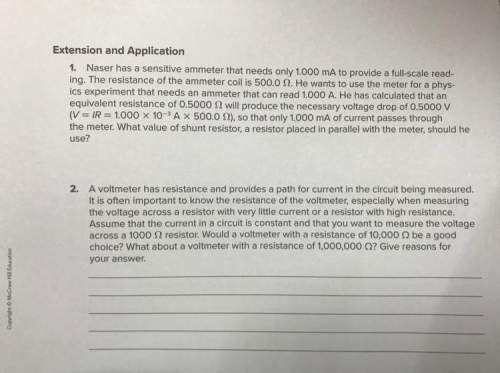
Physics, 28.06.2019 17:10 jadenicole908
(a a superball manufacturer claims a o of 100 for their ball. if you test this by bouncing it on a hard surface and in a vacuum (so there is no air resistance in the experiment), what proportion of its height should the ball return to after each bounce cycle? (b) owing to your assignments being too short, you have time compare this with a ball made of fake flubber, badly copied from professor brainard's original invention. the q of the fake flubber ball is known from industry canada testing, to be 103db, well short of the original invention. calculate how many bounce cycles are required for the fake flubber ball for it to be bouncing at half of its original height.

Answers: 3


Other questions on the subject: Physics

Physics, 21.06.2019 16:30, Jay23456677888
The mass of a muon is 207 times the electron mass; the average lifetime of muons at rest is 2.21 μs. in a certain experiment, muons moving through a laboratory are measured to have an average lifetime of 7.04 μs. for the moving muons, what are (a) β (b) k, and (c) p? the rest energy of the electron is 0.511 mev.
Answers: 2

Physics, 22.06.2019 05:30, yiikes4012
Will give brainliest! which statement best describes the difference between strong nuclear forces and weak nuclear forces? weak nuclear forces are involved when certain types of atoms break down. strong nuclear forces are responsible for holding atoms' nucleus together. weak nuclear forces hold bonds between atoms together. strong nuclear forces hold together the nucleus of an atom. strong nuclear bonds prevent atoms from falling apart. weak nuclear bonds prevent compounds from falling apart. strong nuclear forces are involved in breaking electrons from their shells. weak nuclear forces hold protons in the nucleus.
Answers: 3

Physics, 22.06.2019 07:30, anonymous1813
Some material consisting of a collection of microscopic objects is kept at a high temperature. a photon detector capable of detecting photon energies from infrared through ultraviolet observes photons emitted with energies of 0.3 ev, 0.5 ev, 0.8 ev, 2.0ev, 2.5ev, and 2.8ev. these are the only photon energies observed. (a) draw and label a possible energy-level diagram for one of the microscopic objects, which has four bound states. on the diagram, indicate the transitions corresponding to the emitted photons. explain briefly. (b) would a spring–mass model be a good model for these microscopic objects? why or why not? (c) the material is now cooled down to a very low temperature, and the photon detector stops detecting photon emissions. next, a beam of light with a continuous range of energies from infrared through ultraviolet shines on the material, and the photon detector observes the beam of light after it passes through the material. what photon energies in this beam of light are observed to be significantly reduced in intensity (“dark absorption lines”)? explain briefly.
Answers: 3

Physics, 22.06.2019 10:00, starsinopoli13
How are the crust and the inner core alike? a) they are both solid. b) they both have the same temperature. c) they are both under the same pressure. d) they are both very close to the center of the earth.
Answers: 1
You know the right answer?
(a a superball manufacturer claims a o of 100 for their ball. if you test this by bouncing it on a h...
Questions in other subjects:

Biology, 25.09.2021 17:40

Mathematics, 25.09.2021 17:40


Mathematics, 25.09.2021 17:40



English, 25.09.2021 17:40

Mathematics, 25.09.2021 17:40

English, 25.09.2021 17:40

English, 25.09.2021 17:40




